Peter Doyle, one of Sydney's greatest chefs, steps away from the pans
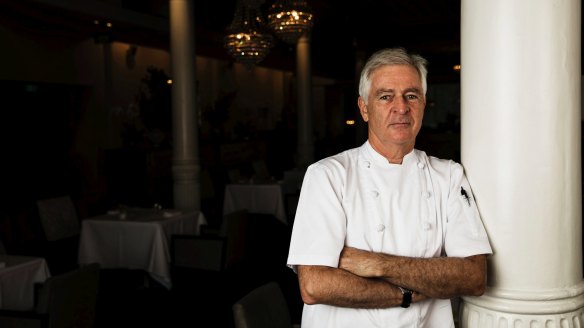
Flashback to the summer of '82. If you lived in Sydney you were eating dodgy Thai and listening to Men At Work. In those days "going viral" simply meant you had to call everyone you'd danced with at Selina's that past fortnight. An innocent time, you might say, when we were still looking up at the sky and pointing at aeroplanes, and more interested in eating our food hot, than photographing it.
We were also barely aware of deep rumblings in Sydney's stomach, rumblings whose significance would only become clear in retrospect.
For starters, the era of the open kitchen had begun at Bayswater Brasserie in Kings Cross, a shy Japanese immigrant called Tetsuya Wakuda washed up at an eatery called Fishwives, and pubs were starting to install ambitious young chefs in their kitchens.
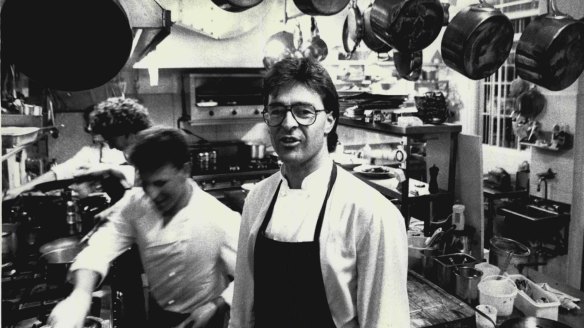
That pub trend had shown signs of life three years earlier when a chef named Peter Doyle, a surfing boy from Caringbah, set up Turrets restaurant at the Castlereagh Hotel in central Sydney. TAFE Apprentice of the Year in 1974, Doyle had paid his dues in the kitchens of long-gone places such as Chanterelle, Le Cafe and the Newport Inn. Now he was on his own.
"It was the only way you could set up a restaurant without money … It was cheap, the kitchen was there waiting for you and we didn't even have to buy the tables and chairs," says Doyle. "We were doing things like john dory on a ginger beurre blanc and a coconut bavarois."
If you were a Sydney chef starting out, the future looked promising.
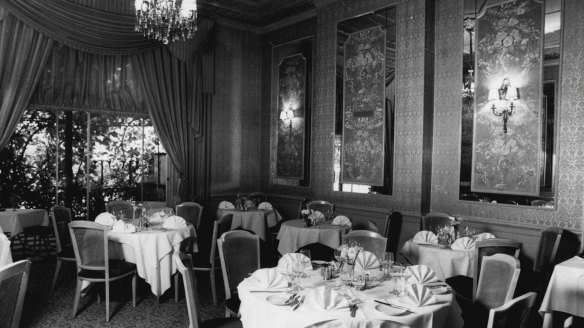
"It was an exciting period with the nouvelle cuisine movement from France in full swing and having an impact on cuisine worldwide. Young chefs wanted to run their own businesses to cook the cuisine they wanted to create and not be tied down to the demands of older generation restaurateurs. We were reviewed by Geraldine Pascall [in The Australian], and Joan Campbell gave us a small feature in Vogue, which got us started."
Doyle, 66, will retire in June from the Merivale Group's elegant est. restaurant on George Street; so it might be that the famously laconic chef is ready to reminisce. And just to prove F. Scott Fitzgerald was wrong about lives and second acts, Doyle is about to launch himself into a fascinating new project. More on that later.
By 1982 Doyle and his wife Bev had left Turrets to establish Reflections on chi-chi Palm Beach.
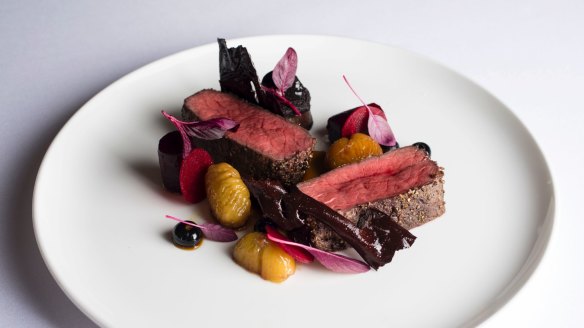
"We converted a fibro cottage into a restaurant. We operated on blind faith as we lived in the area. Bev created a white-walled dining room, with charcoal carpet and black venetians, which was a hit. I designed the kitchen. It was the time of destination dining, when customers were prepared to travel at weekends for lunch or dinner.
Doyle was serving non-chi-chi food to Palmie's Mercedes-and-big-sunglasses set. A signature dish at Reflections – fillet of ocean trout cooked in olive oil and lemon juice with diced tomato, fresh artichoke hearts, parsley and chives – still sounds modern.
"I was cooking a new lighter cuisine, influenced by the nouvelle cuisine chefs of France, but trying to create our own style as we developed. There was no one in Australia to learn the new cooking from," says Doyle.
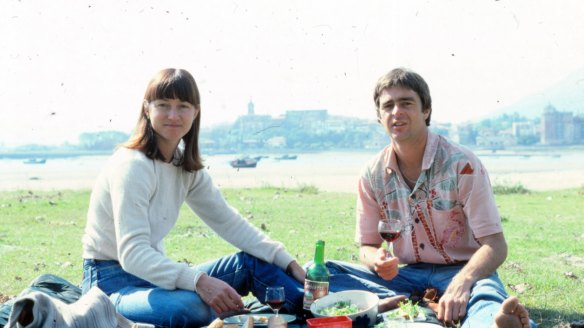
"We had to travel and devour all the books and articles so we could teach ourselves. We were always in a search for better quality produce too, as the variety in the market was very limited. Five good years. Great summers, long winters."
Bev Doyle adds: "At Palm Beach it seemed like all the women wore white! When summer hit, it was totally full on. But the season was short and frantic. Peter had to drive to the city to get supplies a couple of times a week. If he ordered game it came from Victoria and he had to go to the railyard at Darling Harbour to pick it up."
After the first Sydney Morning Herald Good Food Guide came out in 1984 there was lots of interest in the new food movement and new young chefs Damien Pignolet, Neil Perry, Mark Armstrong and Anne Taylor.
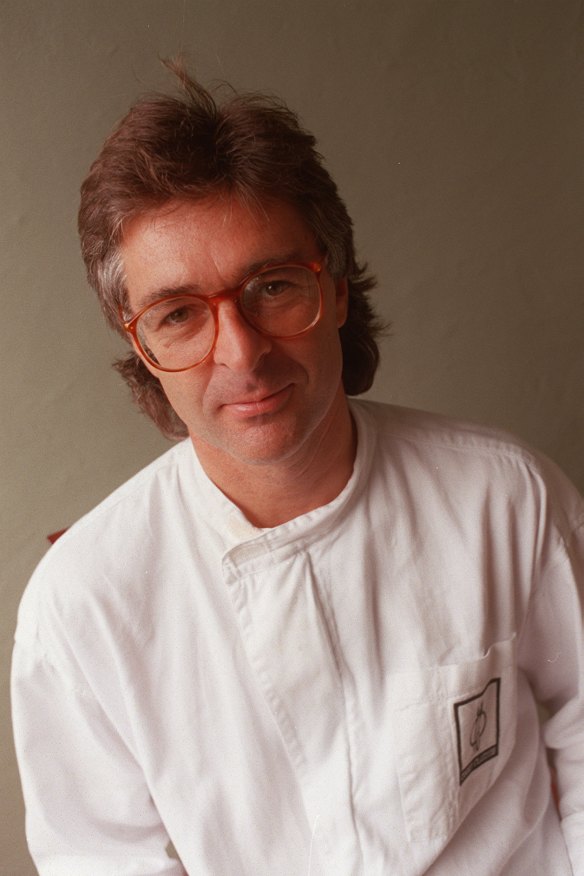
Reflections at Palm Beach arrived about the same time as a certain lifestyle supplement was born in the pages of a certain great metropolitan newspaper. That supplement, called Good Living (you're reading its baby now), would become an arbiter of good taste and the bearer of trends and glad tidings to the city's paladins of dining out for the next 30 years.
Some chefs woke up like Lord Byron one morning, to find they were famous, and their fame was shamelessly burnished through the pages of Good Living. The Doyles and Reflections at Palm Beach received high praise in the new supplement from the recently installed, formidable advertising exec-turned-restaurant critic Leo Schofield; and then, in 1984, they were awarded three hats in the inaugural Sydney Morning Herald Good Food Guide.
During the mid-'80s, when a young self-taught chef with peak self-belief called Neil Perry was making history in Bondi, with "sun, sand and sauvignon blanc" at a cliff-perched Bluewater Grill, Doyle kept serving his elegant cuisine to the bourgeoise at Le Trianon, Potts Point.
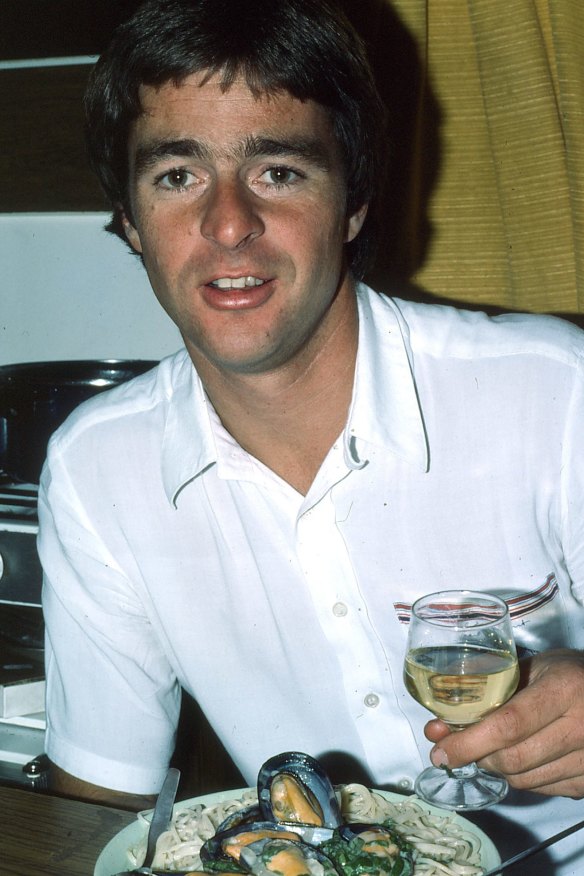
The menus at Trianon were timeless – quail and pigeon consomme, a regal souffle – the prices were reported to be "turbot-charged" and Doyle's love of French wine was obvious. Lucky diners remember one particularly special lunch for the Comte de Lur Saluces, then proprietor of Chateau d'Yquem, and 11 vintages of his family's cathedral-like sauternes.
But the tide was going out on fine dining in Sydney and Doyle knew it:
"We renovated just before the stock market crash of 1987. It was not great timing for fine dining. Bistros became the new direction. It was a struggle as dining became more casual but we had to stabilise for a few years as we planned Cicada."
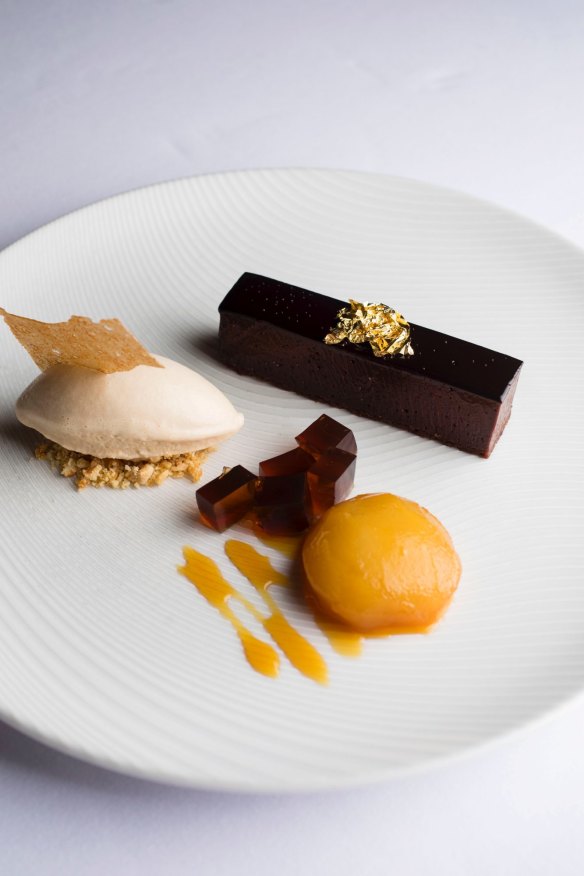
Trianon was renamed Cicada in 1994 and revamped with a very modern Luigi Roselli fit-out. Doyle changed up his whole approach to cooking, developing menus unshackled from the restrictions of formal French food. Visiting US food writer Patricia Wells described a salad of crab, mint and coriander and a soup of rockfish, harissa and saffron as "the personification of modern Australian food: seamless, modern, not conventional, balanced, measured, intelligent and sensible."
The new look and menu at Cicada captured the '90s zeitgeist; well, at least an affluent inner-city suburban version of it.
Good Living readers tended to fit that demographic. So wherever Doyle took his apron, his knives and whisks, the food media followed. By 2001 he was heading up the kitchen for a brief stint at Celsius in the Radisson Hotel and at 49, venerable enough to be named by Good Living as one of six Chefs of Influence:
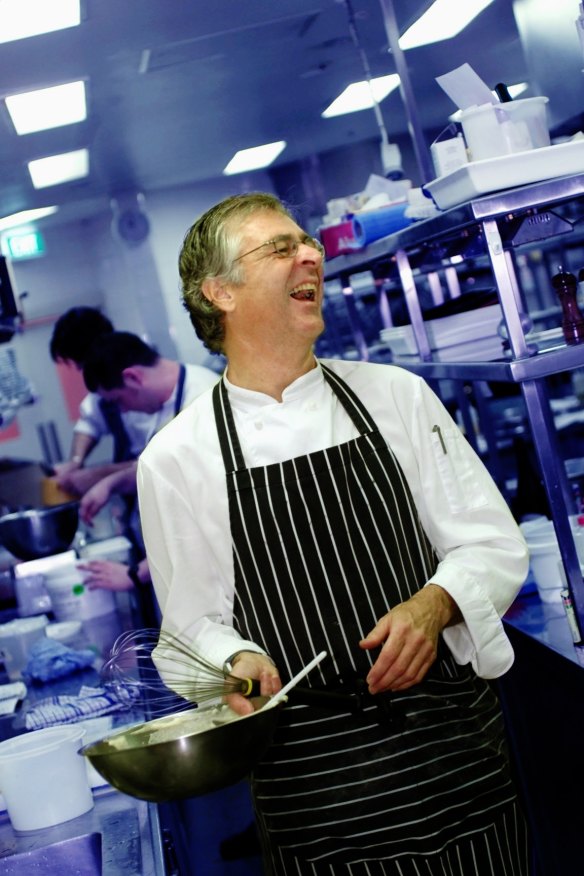
"Chef, traveller, surfer. With a whisk in one hand and a surfboard under his arm, Doyle has watched the ebb and flow of Sydney dining for 30 years. At Turrets, Reflections at Palm Beach, Le Trianon, Cicada and now Celsius, Doyle's style changed as we changed. From nouvelle cuisine to cuisine bourgeoise to elegant modern Australia, he's always been ready to meet the market. He's had it good, he's done it tough and he's an inspiration to the industry." I wrote that. Sheesh, suddenly I feel old. But moving right along …
Since 2003 at the chandeliered and colonnaded est. and with the Merivale Group, Doyle has covered most bases. There have been many awards, plenty of Melbourne Cup lunches, feeding celebrity diners from prime ministers to hip-hop artists and of course inventing new signature dishes such as his steamed Murray cod with shaved abalone, snow peas, black fungi, ginger and a green shallot vinaigrette.
Doyle's next move is more of a reinvention. After he leaves est. in June, he'll step into the leadership role at Merivale's new internal chef apprenticeship school, which launches in January 2019.
"We are looking at building a purpose-built culinary school," says Doyle. "It will be a fully certified curriculum. Over and above that, we hope to cover the areas we're passionate about, with the addition of cultural and guest electives. I can't say any more yet."
So yes, there will be a second act, and it might be called "Peter Doyle, Headmaster". Now that has a certain ring to it.
TRIBUTES FROM EST. ALUMNI
Josh Niland, Saint Peter, Paddington
"Peter is unquestionably one of the best chefs Australia has ever seen. Restraint, generosity and humility are three words not often said about a chef, but Peter is the exception. To have stood side by side with him through a number of services watching foot position, knife choice and team communication, Peter is everything I aspire to be."
Sarah Knights, Automata, Chippendale
"I had the privilege to work at est. under Peter Doyle during my formative years, and he has played a significant role in my professional development as a chef. I learnt invaluable skills and gained knowledge and experience that I will take with me forever. Every time I'm developing a new dish, I remember his words, 'You can't build a house without foundations'."
Karl Firla, Oscillate Wildly, Newtown
"I don't think anyone who worked for Peter could have anything other than admiration for someone who's a constant presence in the kitchen, at the level expected and maintained. Peter's key use of the basic fundamental processes throughout the operation of a kitchen, with constant refinement of the product to the end, is something I now instil in our approach at Oscillate Wildly."
Frank Roberts, food and beverage manager, Merivale Group
"I joined Merivale with Peter back in 2003, having worked with him prior at his restaurant Celsius. He's not going on television or jet-stetting around the globe. He has been on the tools in the kitchen cooking the whole time. His priority is the guest, not himself.
He's also managed to find the balance of being a very committed family man to his wife, children and grandkids, as well as getting a surf in every morning. Now that is talent."
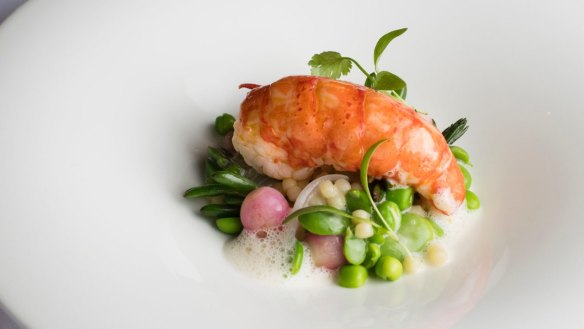
Peter Doyle: a signature recipe
MARRON WITH FREGOLA, RADISH, GINGER LIME SAUCE
Ingredients
6 marron
100ml white wine
50ml white wine vinegar
2 tbsp ginger, peeled and grated
2 shallots, peeled and chopped
50ml cream
250g cold unsalted butter, cubed
40ml lime juice, strained
sea salt and pepper, to taste
12 baby radish, blanched
3 tbsp cucumber, peeled, seeded and diced
3 tbsp green peas, blanched
6 baby pearl onions, blanched and halved
6 tbsp fregola, cooked 8 minutes, refreshed in cold water
handful baby coriander sprigs
Method
1. To cook the marron, fill a large pot with salted water and bring to the boil. Add the marron and cook for one minute. Remove the marron, refresh in iced water and then remove the tail from the shell in one piece.
2. To make the ginger sauce, place the white wine and white wine vinegar in a stainless steel saucepan with the grated ginger and chopped shallots. Bring to a boil over medium-high heat and reduce to 50ml. Add the cream.
3. Bring the sauce back to the boil and whisk in the butter in pieces over a low heat to finish.
4. Season with lime juice, salt and pepper. Strain and keep warm.
5. To serve the marron, place half of the ginger sauce over a low heat and add the marron. Leave the marron in the sauce to poach very gently over a low heat, about three minutes, or until the flesh is just firming.
6. Steam the fregola and vegetable garnish to heat through. Spoon vegetable garnish and ginger sauce into six bowls. Remove the warmed marron and place on the vegetables. Pour the remaining sauce over the marron, sprinkle with coriander and serve.
Serves 6
Restaurant reviews, news and the hottest openings served to your inbox.
Sign up